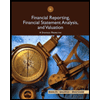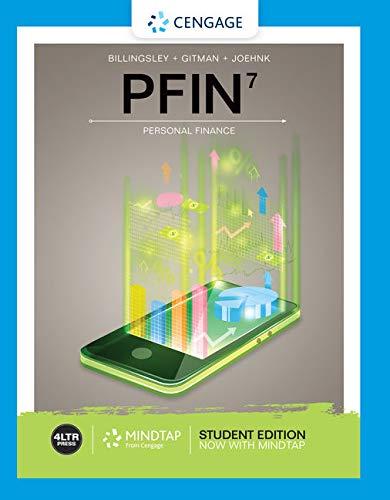
Define each of the following terms:
- a. Optimal distribution policy
- b. Dividend irrelevance theory; bird-in-the-hand theory; tax effect theory
- c. Signaling hypothesis; clientele effect
- d. Residual distribution model; extra dividend
- e. Declaration date; holder-of-record date; ex-dividend date; payment date
- f. Dividend reinvestment plan (DRIP)
- g. Stock split; stock dividend; stock repurchase
a)
To discuss: Meaning of optimal distribution policy.
Explanation of Solution
A corporate policy outlining how to communicate and distribute the messages throughout the various divisions and departments of the company, and it can also affect how documents are filed.
b)
To discuss: Meaning of dividend irrelevance theory, tax effect theory and bird-in-the-hand theory.
Explanation of Solution
Dividend irrelevance theory: The dividend irrelevance theory holds that dividend policy has no effect on either the stock price of a company or its capital cost. Merton Miller and Franco Modigliani (MM) are the main proponents of this view.
In a theoretical sense, they prove their position, but only under strict assumptions, some of which in the real world are clearly not true.
Theory of “bird-in-the-hand”: The theory of “bird-in-the-hand” assumes that investors value a dividend dollar higher than a dollar of expected capital gains because the component of dividend yield, D1/P0 is less risky than the component of ‘g’ in the total expected return equation,
Tax effect theory: The tax effect theory proposes that investors prefer capital gains over dividends as capital gains taxes can be postponed into the future, while dividend taxes must be collected as dividends as earned.
c)
To discuss: Meaning of signaling hypothesis and clientele effect.
Explanation of Solution
Information or signaling content, hypothesis: Is an indicator by the company through a price changes in the dividend that can provide insight as to what the anticipated earnings may be for the company making the actual announcement of the dividend.
Clientele effect: The effect information about dividend announcements on stockholders earning dividends.
d)
To discuss: Residual distribution model and extra dividend.
Explanation of Solution
Residual distribution model: The residual dividend model implies the irrelevance of the theory of dividends, which claims that investors are indifferent between dividend returns or capital gains.
Extra dividend: Extra dividend paid on good times in addition to the regular dividend. It is not always possible to pay or sustain this dividend in the future.
e)
To discuss: Declaration date, holder-of-record date, payment date and ex-dividend date.
Explanation of Solution
Declaration date: It is the date the directors met to declare the regular dividends.
Holder-of-record date: The date on which all registered owners of a company’s stock will receive dividends based on the number of shares held.
Ex-dividend date: It is the date when the right to the dividend leaves the stock.
Payment date: It is the date when the company actually mails the check to the record holders.
f)
To discuss: Dividend re-investment plan (DRIP).
Explanation of Solution
An automated way for shareholders to voluntarily purchase common stock shares instead of having dividends paid out in cash.
g)
To discuss: Stock split, stock dividend and stock repurchase.
Explanation of Solution
Stock split: If shares of a company’s stock are split, thereby increasing the number of outstanding shares on the market, a strategy for holding a stock in an optimal price range.
Stock dividend: Increases the number of outstanding shares as with a split stock, but as a stock dividend, stockholders will receive a proportionate share of stock at no expense.
Stock repurchase: It is nothing but when a company buys back some its own outstanding stock.
Want to see more full solutions like this?
Chapter 15 Solutions
Intermediate Financial Management
- No AI Which of the following is NOT a characteristic of common stock? A) Voting rights B) Dividends C) Guaranteed return on investment D) Ownership in the companyarrow_forwardWhich of the following would be considered an example of an operating activity in a cash flow statement? A) Issuance of common stock B) Borrowing from a bank C) Payment for goods sold D) Purchase of equipmentarrow_forwardNo chatgpt!! What does the Price-to-Earnings (P/E) ratio measure? A) Profit margin B) Dividend yield C) Market valuation relative to earnings D) Return on equityarrow_forward
- I need help in this question!! What does the Price-to-Earnings (P/E) ratio measure? A) Profit margin B) Dividend yield C) Market valuation relative to earnings D) Return on equityarrow_forwardWhat does the Price-to-Earnings (P/E) ratio measure? A) Profit margin B) Dividend yield C) Market valuation relative to earnings D) Return on equityarrow_forwardWhat is the risk-free rate typically associated with? A) Corporate bonds B) Government securities C) Real estate investments D) Equitiesarrow_forward
- No chatgpt! Which of the following financial instruments is used to hedge against interest rate risk? A) Futures contracts B) Treasury bills C) Interest rate swaps D) Corporate bondsarrow_forwardWhich of the following financial instruments is used to hedge against interest rate risk? A) Futures contracts B) Treasury bills C) Interest rate swaps D) Corporate bondsarrow_forwardNeed assistance! Which of the following is the best description of a dividend? A) The amount a company spends on research and development B) A payment made to shareholders from company profits C) The price of a company’s stock D) The cost of producing goods for salearrow_forward
- I need help in this question! Which of the following is the best description of a dividend? A) The amount a company spends on research and development B) A payment made to shareholders from company profits C) The price of a company’s stock D) The cost of producing goods for salearrow_forwardNo AI Which of the following is the best description of a dividend? A) The amount a company spends on research and development B) A payment made to shareholders from company profits C) The price of a company’s stock D) The cost of producing goods for saleNeed help!arrow_forwardDo not use ChatGPT! Which of the following is the best description of a dividend? A) The amount a company spends on research and development B) A payment made to shareholders from company profits C) The price of a company’s stock D) The cost of producing goods for salearrow_forward
 Intermediate Financial Management (MindTap Course...FinanceISBN:9781337395083Author:Eugene F. Brigham, Phillip R. DavesPublisher:Cengage Learning
Intermediate Financial Management (MindTap Course...FinanceISBN:9781337395083Author:Eugene F. Brigham, Phillip R. DavesPublisher:Cengage Learning Managerial AccountingAccountingISBN:9781337912020Author:Carl Warren, Ph.d. Cma William B. TaylerPublisher:South-Western College Pub
Managerial AccountingAccountingISBN:9781337912020Author:Carl Warren, Ph.d. Cma William B. TaylerPublisher:South-Western College Pub EBK CONTEMPORARY FINANCIAL MANAGEMENTFinanceISBN:9781337514835Author:MOYERPublisher:CENGAGE LEARNING - CONSIGNMENT
EBK CONTEMPORARY FINANCIAL MANAGEMENTFinanceISBN:9781337514835Author:MOYERPublisher:CENGAGE LEARNING - CONSIGNMENT Financial Reporting, Financial Statement Analysis...FinanceISBN:9781285190907Author:James M. Wahlen, Stephen P. Baginski, Mark BradshawPublisher:Cengage Learning
Financial Reporting, Financial Statement Analysis...FinanceISBN:9781285190907Author:James M. Wahlen, Stephen P. Baginski, Mark BradshawPublisher:Cengage Learning Pfin (with Mindtap, 1 Term Printed Access Card) (...FinanceISBN:9780357033609Author:Randall Billingsley, Lawrence J. Gitman, Michael D. JoehnkPublisher:Cengage Learning
Pfin (with Mindtap, 1 Term Printed Access Card) (...FinanceISBN:9780357033609Author:Randall Billingsley, Lawrence J. Gitman, Michael D. JoehnkPublisher:Cengage Learning





